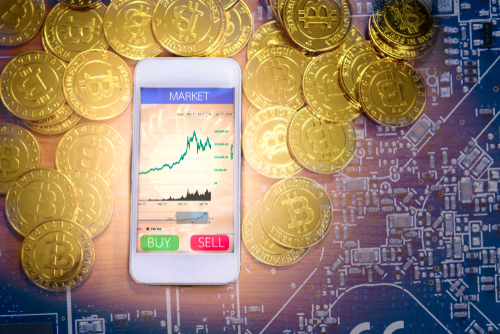Crypto trading tumbles as investment scramble unwinds
LONDON – Trading activity on cryptocurrency exchanges has halved from its December peak, industry data shows, as retail interest in the virtual coins declines and the prices of many remain far below their recent highs.
Average daily traded volumes across cryptocurrency exchanges fell to $9.1 billion in March and to $7.4 billion in the first half of April, compared to almost $17 billion in December, according to data compiled by crypto analysis website CryptoCompare.
Rocketing prices of digital currencies such as bitcoin fueled a mania in the sector towards the end of 2017 as retail investors across the globe scrambled to get a piece of the action. That triggered regulatory warnings and threats to crack down on the market.
China, a major market, has shut down local cryptocurrency trading exchanges.
Since peaking in December and January, bitcoin’s price BTC=BTSP has more than halved, while the second and third largest cryptocurrencies, ethereum .MVETH and Ripple’s XRP .MVXRP have lost even more of their value.
But crypto-trading volumes in March and April have only fallen back to their levels of November. They remain as much as 25 times above their levels of March-April last year.
“Volumes are down because there was a hype cycle in December on the back of futures products coming to market. You’ll find that most of that was retail-driven, with Korea and Japan as major instigators,” said Charles Hayter, London-based CryptoCompare’s co-founder.
“The governments have now dampened some of that irrational exuberance.”
People involved in the industry say trading activity outside of exchanges, on over-the-counter markets, where larger institutional investors tend to trade, has held up far better.
Major exchanges with drops of more than half in daily traded volumes between December and March include Bitfinex, San Fransisco-based Coinbase, Luxembourg-based Bitstamp and Poloniex, which was recently bought by Goldman Sachs-backed cryptocurrency start-up Circle.
A person close to Bitstamp said volumes were directly related to overall interest in cryptocurrencies, but that the exchange had maintained its market share between December and April. The other exchanges did not respond to requests for comment.
TRUE BELIEVERS
The slump in trading volumes will be seized on by critics of digital currencies as a further indication they are a giant Ponzi scheme that is now unravelling.
But people active in the industry say short-term price and trading swings are to be expected for a highly disruptive technology, and that true believers in the power of digital currencies will remain invested for the long-haul.
“The crypto market … is set to soar over the next few years and beyond, as more and more investors appreciate the fundamentals,” said Nigel Green, CEO of deVere, a financial consultancy which operates a crypto exchange app.
“Whether traditionalists like it or not, the clock on digital currencies isn’t going to be turned back.”
Not all of the falls in trading volumes can be explained by weaker investor appetite.
Restrictions in countries like China will have hit exchanges used heavily by Chinese investors disproportionately, while other trading platforms may have been given a boost by the listing of new cryptocurrencies during the year.
Many new exchanges have also opened, taking market share from older platforms.
Some like OKEx and Huobi have grown their volumes since December despite the broader decline, with March among their strongest months to date.
The data compiled by CryptoCompare covers most of the biggest exchanges and the company said it added new exchanges to its database as and when their volumes hit significant levels.
Other data providers may have slightly different ways of calculating volumes, particularly when one cryptocurrency is traded against another rather than against government-backed fiat currencies like the U.S. dollar.
Some exchanges in Japan, one of the biggest markets for crypto investment, do not provide trading volume data.

